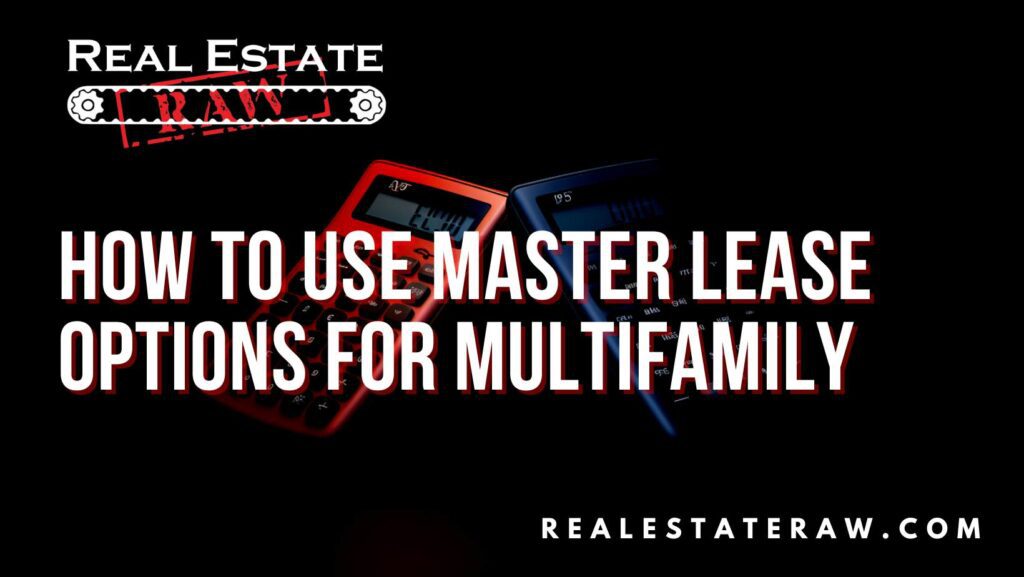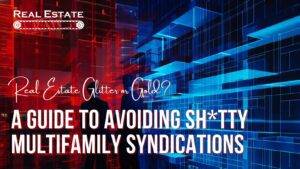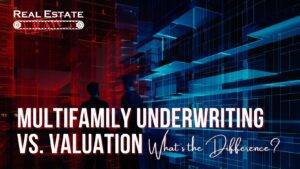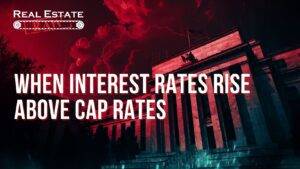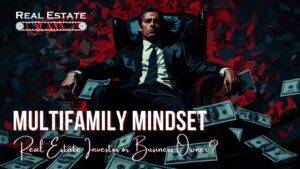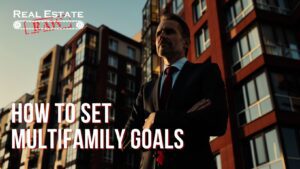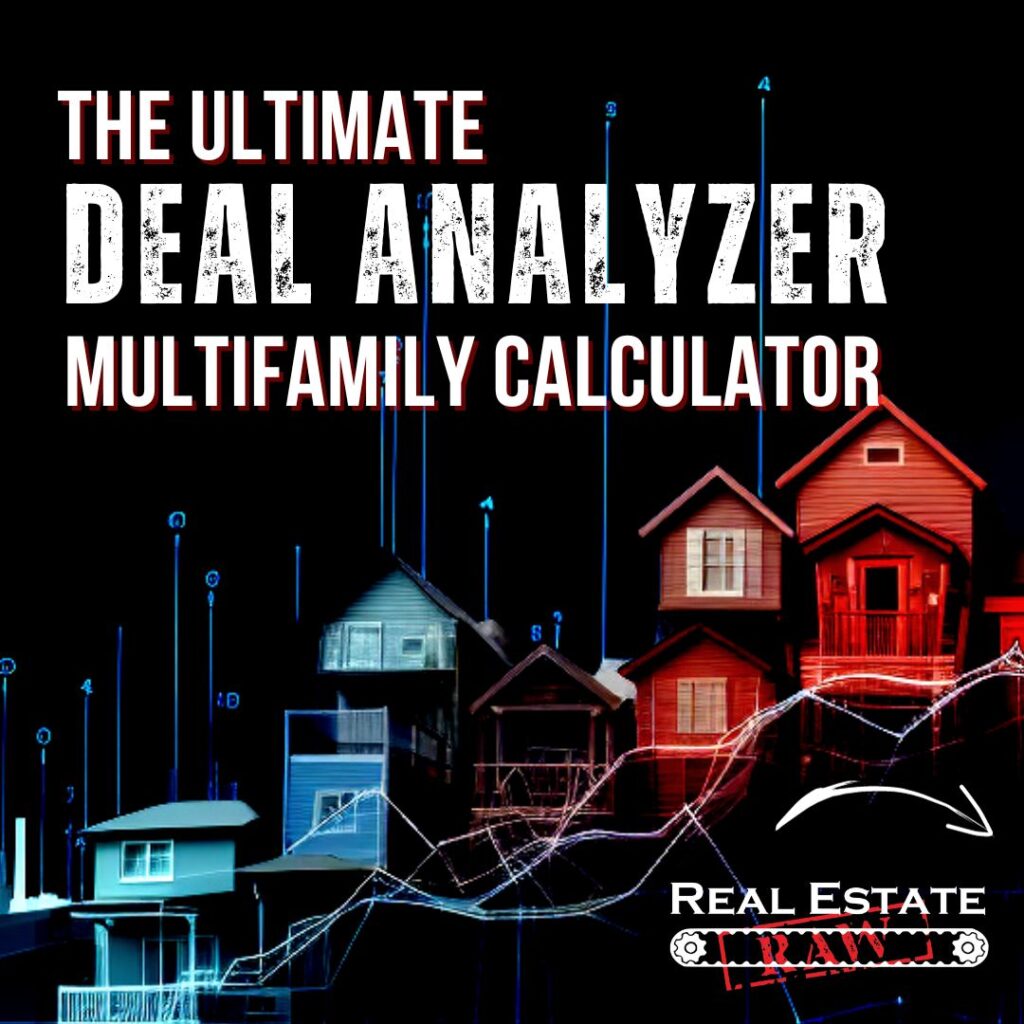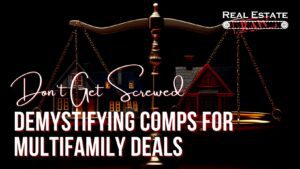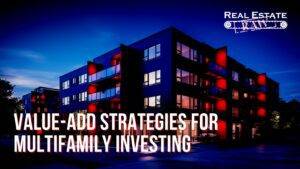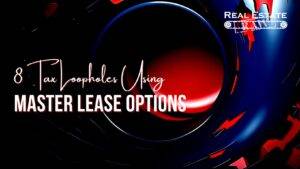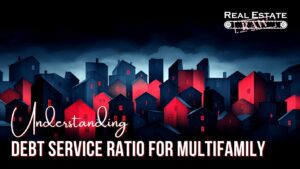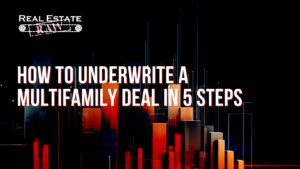A master lease option is a contract between a seller and a buyer that does two basic things. It allows the buyer (you) to control the operations of the asset and the future sale of the property. The master lease option consists of two separate documents: the master lease and the option to purchase. The lease allows you to control the asset while the purchase option allows you to control the future sale.
Here’s an example of a master lease option: Gino agrees to a master lease option offer from Susan for his apartment complex. The master lease allows Susan to sublease the apartments to the tenants. Susan is taking control of the property by “renting” the entire property, with the right to sublet the units.
In short, Susan can manage and control the property. She may hire a management company, or she may choose to manage it herself. The option to purchase (option memorandum) allows Susan to set a price for the property today with a sale date sometime in the future. He can rent the asset while getting ready to purchase the property.
If a master lease option is done correctly, the value of the asset should rise above the option price that was negotiated during the time of the contract (option period). Once it does, you would exercise your option to purchase. The master lease option works for all types of assets, whether a 200-unit apartment complex, a single-family house, or anything in between.
The Purchase Option
The purchase option of a master lease option contract is the portion that gives you control over the sale of the property and is usually the part that comes with a price tag. An option is exactly what it sounds like. It gives the buyer (you) the “option” to purchase a particular property within a set amount of time and for a set price. The buyer usually pays an amount of money for the right to hold this option (option period). This money is called “option money” and is treated as a deposit.
The option money is given to the seller (or put in escrow) at the time of the execution of the entire master lease option contract. This money “buys” the rights stated in the option document. During the option period, you may choose to purchase the property for the set amount stated in the option contract, or you may choose to let the option contract expire and not purchase the deal. If you execute the option to purchase, the option money is applied to the price at closing. If you do not purchase the property within the time frame set by the option, you will lose the option money. This is the risk of being able to control the sale of the property within a set time.
With an master lease option, you have control over the sale in several ways. The option lets you buy the property for the set amount. It also lets you sell the asset to another buyer if you purchase it first. This may sound complicated, but it’s not. Once you have agreed to an option agreement, the price is set in stone and cannot change for the period that you hold the contract.
If you can find a buyer to pay more than your option price, then you could exercise the option to purchase and sell the property to the next buyer. The difference would be yours. The master lease option contract could be sold too, which will be covered in the next sections.
Example
Imagine you decide to go for a master lease option deal. Here are the details:
• You get a master lease option deal for $1,000,000.
• The master lease option contract is for three years.
• Year 2, you find a buyer that will pay $1,500,000.
• The price is set at $1,000,000, so you keep the difference.
The catch here is that you would need to complete the sale before you could sell the property to the next person. You could use transactional funding. In this case, a lender will come in and lend up to 100% of the needed amount, but for a notably short time, usually two to three days. This would allow you to complete the option agreement and then immediately sell to the next buyer.
There are many other options, such as Transactional Funding. This is a very short term (24-48 hr.) loan at a high interest rate. For now, focus on exercising your option to purchase and close the deal. Then you could immediately sell to the next buyer at a higher price.
As you can see, the option document allows us to not only control the sale but to benefit from the PROFIT at sale. This is a great way to create equity in real estate. Always check with an attorney in the state in which you are doing the deal, because laws change from state to state regarding closing procedures.
The Master Lease
This master lease is the other half of the master lease option and is a formal rental agreement between you and the owner of the property. The lease allows you to take control of the day-to-day operations of the property, and it will allow you to sublet the units to new renters (or the ones that are already there). Your duties will be the same as the owner in this position, including management, rent collection, paying the bills, and covering the repairs and expenses of the property. Under the master lease, you could hire new management or become the management yourself.
The value of controlling the operations is it will effectively allow you to renovate the property and improve its operations without the risk of owning the asset. Once you have it at its full potential, you can then exercise the option to purchase and realize the equity you created between the option price and the new value. The lease portion of the master lease option also allows you to control the CASH FLOW.
Note: I often get asked about the difference between a lease option and master lease option. Quite honestly, there is not much. The term “lease option” is more commonly referred to in the single-family markets and master lease option is more referenced when discussing commercial or multifamily deals. If you wanted to rent a house with the option to purchase it later, you get a lease option. This is more commonly known as “rent to own.” A master lease option allows you to control multiple units at once.
Why Use a Master Lease Option?
A master lease option is not the only way to approach buying real estate. It is just one of many ways for you to do deals. There are many creative techniques for investors to do deals. The technique is just one tool in the toolbox of a skilled real estate entrepreneur. That said, the Master Lease Option is the best way for a new investor to take control of a property without the hassles of banks, lenders, appraisals, or qualifications.
I have already discussed the requirements for qualifying for traditional financing. Besides the financial aspect of qualifying for a loan, most lenders want you to have experience too. If you are trying to do a large, multi-family property, you may need multi-family experience to get the lender to qualify you for the deal. Experience may not be as much of a factor if you are only trying to buy a duplex.
As mentioned, many people never actually start to build a portfolio because of lack of funding or the inability to find good deals. The master lease allows you to take control of a great deal with little or no money out of your own pocket. This isn’t a “no-money-down” technique. Those are not responsible. Most deals do require money to get into, but there are ways to get others to join you and help to provide that money. Trying to get “no-money-down” deals is a great way to get over-leveraged and to potentially damage relationships with agents.
The master lease option ultimately allows you to build a portfolio and gain real estate experience without some of the barriers to entry that exist in the commercial real estate market. I advocate learning how to manage real estate on your own. Learning the management side of the business makes you a strong investor and much more marketable to money partners and lenders. If you are not interested in managing your own assets, then be sure you know how to manage your management companies.
The master lease option opens opportunities for many deals that otherwise may not have been a reality. With a bank loan, on the other hand, you must qualify and the property itself must also qualify. Here are some factors that limit you from traditional bank loans:
• If there are lots of distressed assets on the market, the lenders will be less likely to lend.
• If a deal has low occupancy or low rent collections, it will not likely qualify for traditional financing. You will likely need to do a bridge loan. Lenders’ appetites for this type of debt will rise and fall with the strength of the economy.
• In some market cycles, it does not make sense to put a lot of money into a property. If the values are low or declining, you will want to find alternative ways to fund renovations.
If you look at only a few deals per month, you will find that most of the properties out there fit these descriptions.
The master lease option is a great way to do rehab projects. It is also good for mitigating some of the risks of doing deals that need work. It is a good vehicle for taking control of something that may not be a good deal but, with work and effort, can become a good deal. Once you turn a property around, then you could get a loan and exercise the option that you have on the property. You may be able to find a buyer in the meantime and wholesale, or “flip” the deal. Remember, with the master lease, you control the operations of the property, and with the option, you control the sale of the property.
This technique is also a good way to add units to an already-existing portfolio. Even though you may not technically own the units until you exercise the option, you control the property and the service contracts for that property. This means that you may be able to negotiate with the plumber, the painter, the carpenter, and so on, because you now control more units. This is called economy of scale.
In 2012 I added a 108-unit apartment community to my portfolio with a master lease option. This increased my economy of scale in that market. Afterwards I was able to negotiate better prices and terms for work on the property because I was able to offer the contactors the opportunity to work on my other assets too. Economy of scale is an important concept in real estate, especially in multifamily. The more units you have, the easier it is to operate in a market.
Sellers also get a lot out of doing a master lease. Many sellers want to sell because they are burned out from the business. This may surprise you, but not all people are selling property because they need or want cash. I have done deals where sellers wanted to retire. They didn’t need all the cash up front; they really just wanted to go live at the beach but couldn’t because of the real estate they had to deal with every day.
Other sellers thought that this business was for them but found that they were wrong. They didn’t get the education you are getting. Still others hired a bad management company and didn’t see any cash flow, so they look for a new operational solution.
This article was originally published in the book Creative Cash: The Complete Guide to Master Lease Options and Seller Financing for Investing in Real Estate.
Best of luck!
Bill Ham

